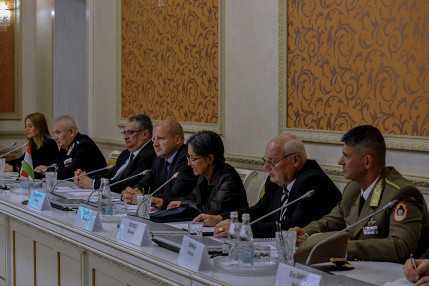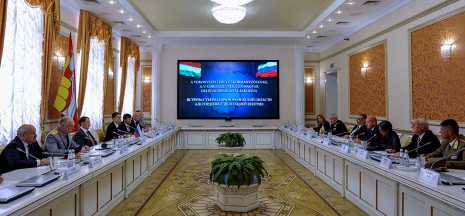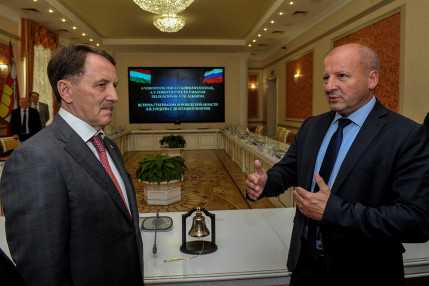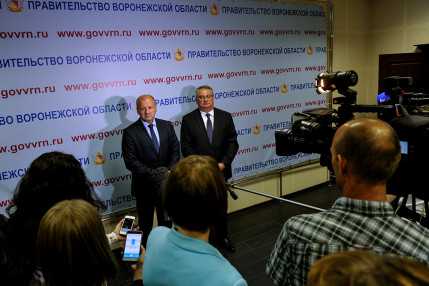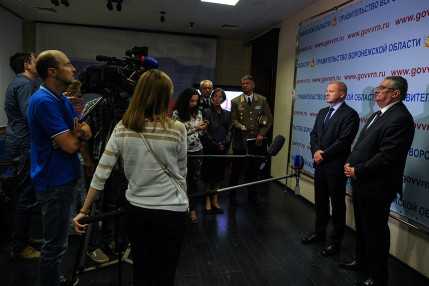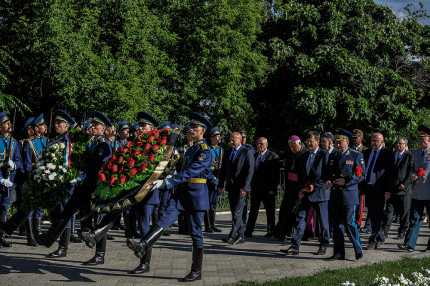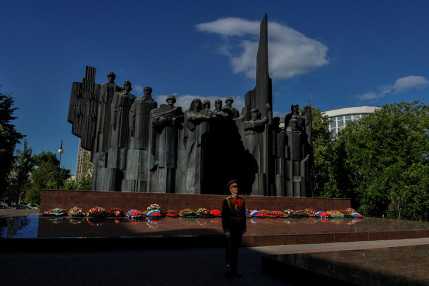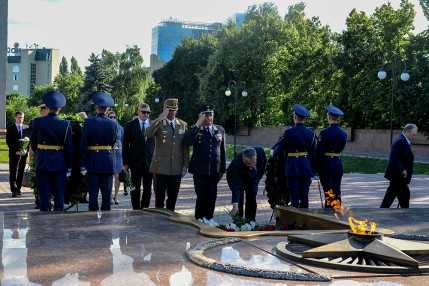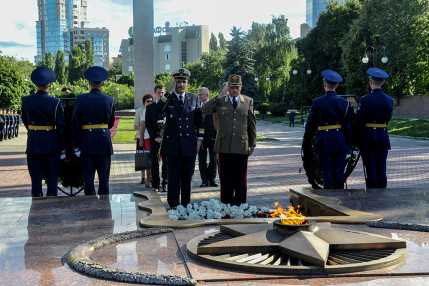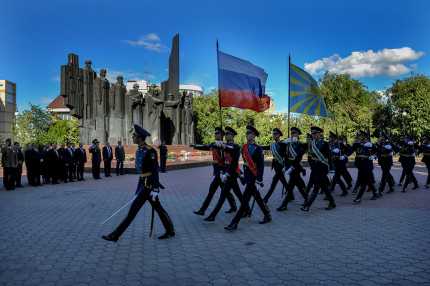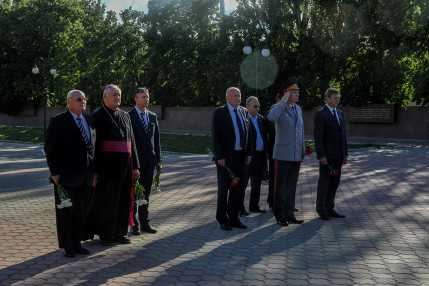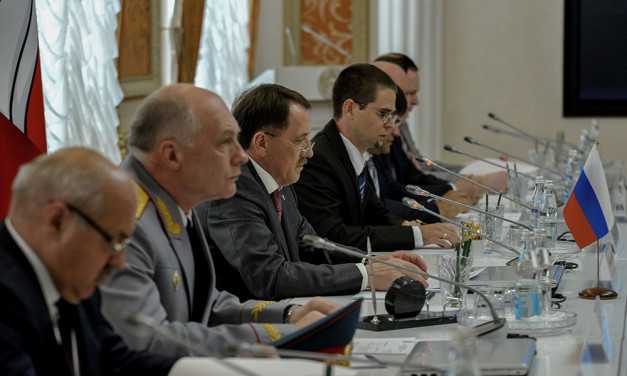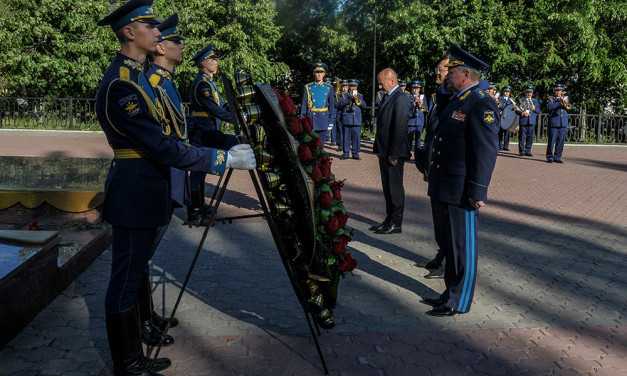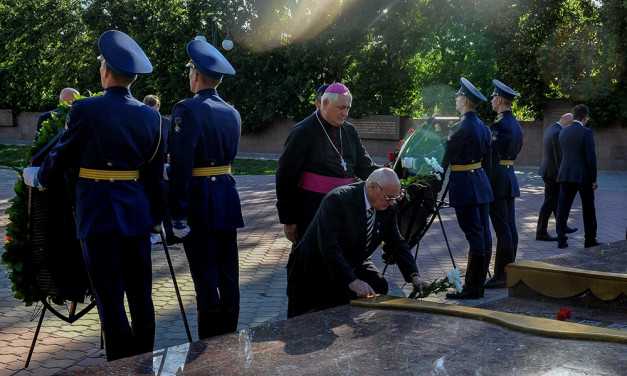Minister of Defence Travels to Don Bend in Russia to Pay Tribute
Szöveg: honvedelem.hu / MTI | 2017. július 7. 12:35On Thursday, 6 July Minister of Defence Dr. István Simicskó arrived for a two-day visit to pay tribute in Voronezh, the one-time site of the battles fought along the Don Bend during the Second World War.
Galéria
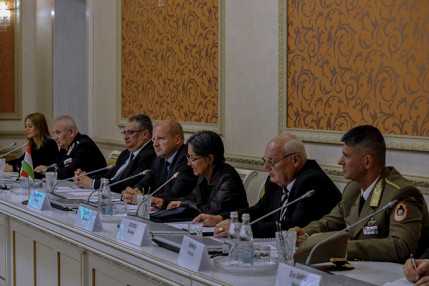
After the discussion, the minister of defence told the press that the year 2017 is a milestone anniversary of two highly significant Hungarian war grave care events in Russia: the 1st Hungarian Central Military Cemetery was built 20 years ago, and the 2nd Hungarian Central Military Cemetery was inaugurated 15 years ago. Dr. István Simicskó said that the incumbent defence minister has the moral responsibility of visiting Voronezh at least once to pay tribute. According to the minister, the task of our generation, having learnt from history, is to state that there must be no more such wars. There is a need for mutual understanding and respect among nations, Dr. István Simicskó pointed out, and called it important that the leaders of the two countries, Russian President Vladimir Putin and Prime Minister of Hungary Viktor Orbán hold annual discussions about the forms of cooperation between the two countries.
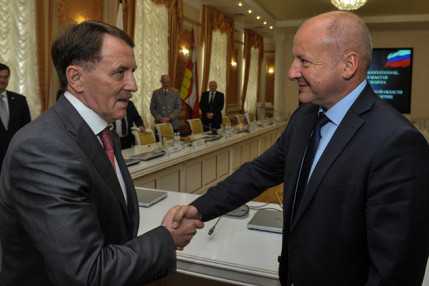
Dr. István Simicskó stated that mutual respect between Hungary and Russia is also the guiding principle of preserving the memory of our fallen soldiers. He told the governor of Voronezh Oblast that there are more than thousand sites with Soviet (Russian) military monuments in Hungary. He also presented him with a pictorial album which shows that the fallen Soviet soldiers have worthy final resting places. According to the minister of defence, the discussion of issues in the field of war memorial service and war grave care was candid, fruitful and held in an open atmosphere. Dr. István Simicskó told the press that he put forward a proposal concerning the start of a Don Express next year, on the 75th anniversary of the Don breakthrough, in the framework of cooperation between the Hungarian and Russian state railways, which would be modelled on the Isonzo Express as a train travelling through the WWII sites of the Don Bend via Voronezh.
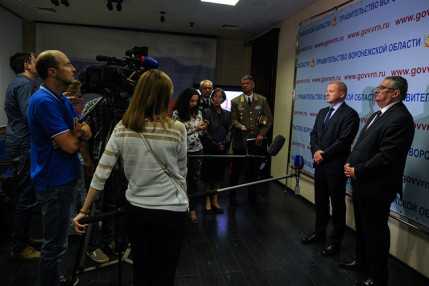
After the discussion, Dr. István Simicskó and the delegation headed by him laid a wreath at the Soviet memorial in Victory Square, Voronezh.
Hungary voluntarily joined the Eastern Campaign in 1941. In January 1943, the Royal Hungarian Armed Forces 2nd Hungarian Army suffered very severe annihilating losses in the battles fought in the Voronezh area. The number of Hungarian troops who were wounded, killed, went missing or were captured during the almost yearlong deployment of the 2nd Army on the Eastern Front is estimated at around 125,000. Of this number, some 50,000 were killed in action and just as many were wounded in action. Nearly 30,000 soldiers were taken prisoners of war or went missing forever on the boundless Russian plains. In the area of Russia, the primary aim was to find the burial sites of Hungarians who had died in POW or labor camps. The Russian partner organization had 369 WWII and seven WWI memorials built at the sites of the one-time POW cemeteries in memory of Hungarian victims, of which 101 sites have granite tablets with the names of dead Hungarian soldiers and forced laborers engraved on them. So far 975 burial sites have been located.

Photo: Tünde Rácz

